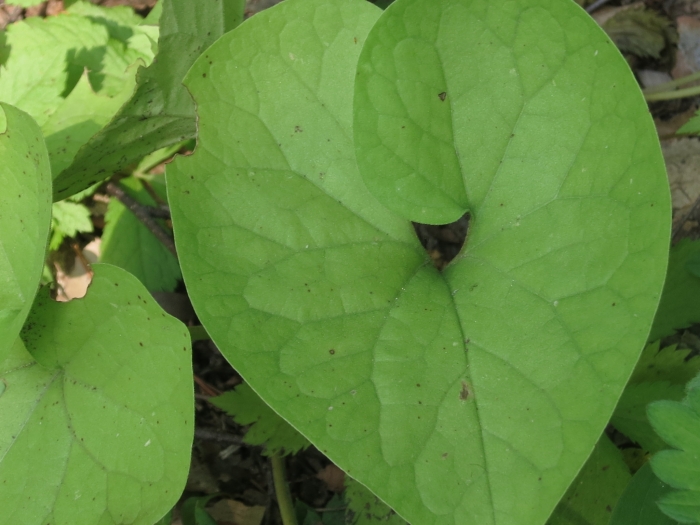Siebold’s Wild Ginger
(Asarum sieboldii)
Siebold’s Wild Ginger (Asarum sieboldii)
/
/

Repina Tatyana
CC BY 4.0
Image By:
Repina Tatyana
Recorded By:
Copyright:
CC BY 4.0
Copyright Notice:
Photo by: Repina Tatyana | License Type: CC BY 4.0 | License URL: http://creativecommons.org/licenses/by/4.0/ | Rights Holder: Repina Tatyana | Publisher: iNaturalist | Date Created: 2019-06-20T14:48:57-07:00 |
























Estimated Native Range
Summary
Asarum sieboldii, commonly known as Siebold’s Wild Ginger, is a perennial herb native to the understory of deciduous and mixed forests in Japan, Korea, and China. It forms dense mats of heart-shaped, glossy green leaves that can spread up to 12 inches (30 cm) wide. In the spring, it produces distinctive, jug-shaped, dark maroon flowers that are often hidden beneath the foliage. These flowers are not particularly showy but add a subtle charm to the plant’s overall appearance. The plant typically grows to a height of 6 to 12 inches (15 to 30 cm).
Siebold’s Wild Ginger is valued for its ornamental foliage and its ability to thrive in challenging garden conditions, such as deep shade. It is commonly used as a ground cover in woodland gardens, shade gardens, and naturalized areas. This plant prefers moist, well-drained soil rich in organic matter and consistent moisture, although it can tolerate short periods of dryness once established. It is generally low-maintenance and can be an excellent choice for gardeners looking to cover large shaded areas. While it is not typically afflicted by serious pests or diseases, it can occasionally suffer from slug damage. It is also important to note that all parts of the plant are toxic if ingested.CC BY-SA 4.0
Siebold’s Wild Ginger is valued for its ornamental foliage and its ability to thrive in challenging garden conditions, such as deep shade. It is commonly used as a ground cover in woodland gardens, shade gardens, and naturalized areas. This plant prefers moist, well-drained soil rich in organic matter and consistent moisture, although it can tolerate short periods of dryness once established. It is generally low-maintenance and can be an excellent choice for gardeners looking to cover large shaded areas. While it is not typically afflicted by serious pests or diseases, it can occasionally suffer from slug damage. It is also important to note that all parts of the plant are toxic if ingested.CC BY-SA 4.0
Plant Description
- Plant Type: Herb
- Height: 0.5-1 feet
- Width: 0.5-1 feet
- Growth Rate: Slow
- Flower Color: Brown, Purple
- Flowering Season: Spring
- Leaf Retention: Evergreen
Growth Requirements
- Sun: Part Shade, Full Shade
- Water: Medium
- Drainage: Medium
Common Uses
Border Plant, Groundcover, Low Maintenance
Natural Habitat
native to the understory of deciduous and mixed forests in Japan, Korea, and China
Other Names
Common Names: Wild Ginger, Hua Xi Xin, Jokdulibul, Usuba-Saishin, Siebold’s Ginger
Scientific Names: , Asarum sieboldii, Asarum sieboldii f. cornutum, Asarum sieboldii var. cornutum, Asarum sieboldii var. viridiluteolum, Asarum sonunsanense f. viriluteolum, Asarum versicolor, Asarum versicolor f. non-versicolor, Asarum versicolor var. non-versicolor, Asarum yeonbyeonense
GBIF Accepted Name: